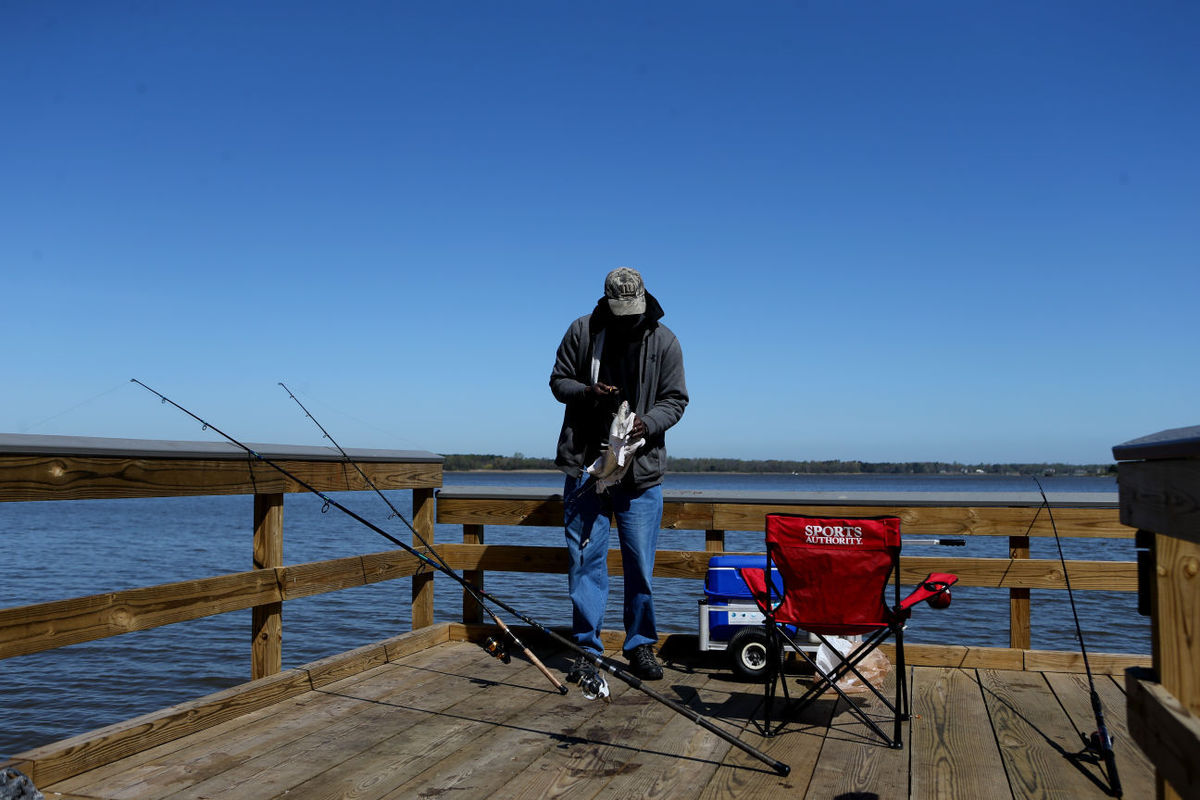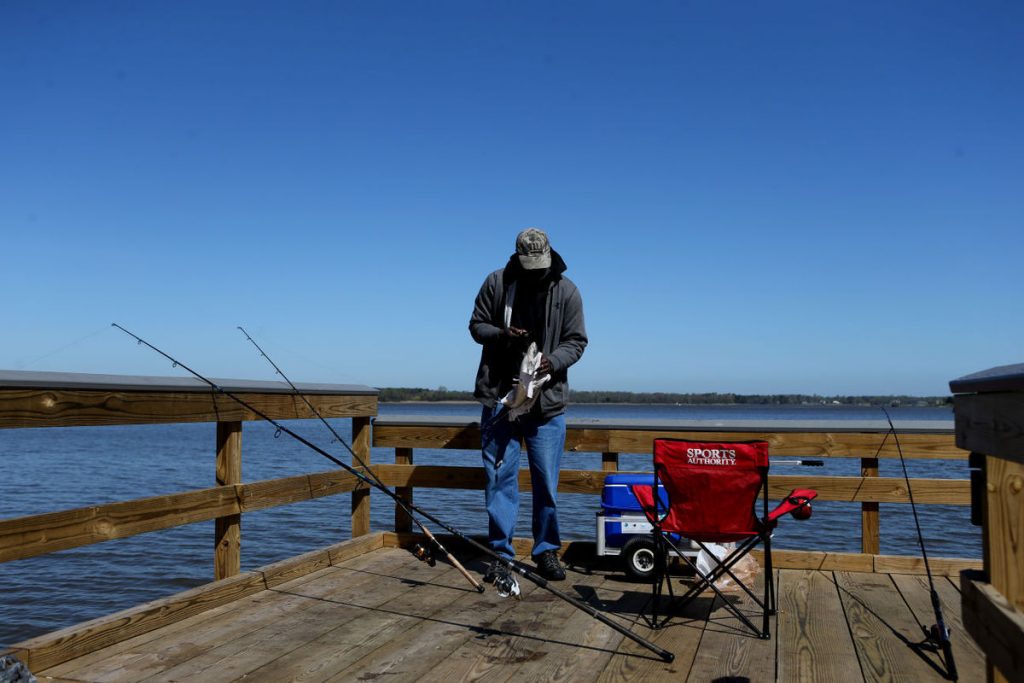Article Courtesy: pilotonline.com | By: Dave Mayfield | Originally Published: August 8, 2016 | Please click here for original article.
Above: Jay Hagan pulls bait from the fish he caught off the new pier furnished by the city of Suffolk at Sleepy Hole Park on Wednesday, March 30, 2016. Photo Courtesy: Jason Hirschfield | Virginian-Pilot
They’re known by names like greeneyes, pearlsides and halfbeaks, and they’re not marbles nor birds nor precious stones.
They’re fish – more specifically, forage fish, little guys that the big boys like tuna, marlins and whales gorge on out in the ocean.
You can just call them bait.
On Monday, a regional fisheries panel took a historic step to protect them – not just for their own good but for the good of the food chain in which they’re a vital link.
In a hotel conference room overlooking the ocean, the Mid-Atlantic Fishery Management Council adopted an amendment to safeguard more than 50 species of forage critters.
It’s the first East Coast panel and only the second of eight U.S. regional ocean councils to decide that creatures like sand lances, horned lanternfish and warty bobtail squids deserve a protection plan. The council that oversees the waters off California, Oregon and Washington paved the way with a similar action last year.
Monday’s decision was “a huge leap forward in fishery management,” said Joseph Gordon, who helps oversee ocean-related issues for The Pew Charitable Trusts.
“These little fish are the unsung heroes of the ocean,” Gordon said. “They’re what feeds everything, from seabirds to seals to whales to sharks. They’re the lifeblood of our Atlantic Ocean.”
Now, commercial fishermen in federal waters from New York to North Carolina can’t start targeting dozens of these lower-rung species in the ocean food frenzy without scientific evidence that it wouldn’t harm the larger ecosystem.
Rick Robins, the mid-Atlantic council’s chairman, said the panel is trying to get ahead of fishing demands.
“Too often we’ve had fisheries that developed relatively quickly in the absence of any science and the absence of an adequate management plan, and those fisheries had to be rebuilt as a consequence,” Robins said.
He knows from firsthand experience. The Suffolk resident is in the seafood processing business and was at the forefront of an explosion in the harvesting of a small shark known as the spiny dogfish back in the 1990s. The species was decimated by overfishing before regulators could develop a long-term protection plan.
Unlike dogfish, not many of the creatures on the list approved Monday are eaten much by humans.
But some could be, and others might become targets for processors of fish oil or fish meal. Already, a fish called menhaden is harvested in huge numbers for such products. That species and some other forage fishes already have management plans. Because of that, they weren’t included in Monday’s action, which applies to what’s known as “unmanaged species.”
The list of the newly protected – not just fish, but squids, krill and other creatures – was whittled down from more than 270 candidates.
What’s left reads like a fantasia of the scary, strange and stupendous – despite their relatively small size.
Some are as remarkable as their names.
The neon flying squid can soar in schools more than 100 feet above the ocean at speeds of more than 11 meters per second – “faster than Usain Bolt!” screamed a headline in Britain’s Daily Nail newspaper, referring to Jamaica’s record-setting Olympic sprinter.
The fluorescence emitted from the eyes of a fish called the shortnose greeneye allows it to unmask even-tinier prey hiding in the bluish depths.
The American sand lance congregates in large schools near the surface, but it also burrows in the sand.
Sea angels are slugs that can swim far more daintily than their order would suggest.
No one dissented Monday from conveying these creatures new protections.
But the meeting wasn’t without controversy.
There were debates and impassioned speeches about whether to include several species at the larger end of the spectrum.
Representatives of some commercial fishing companies argued against including bullet mackerel, frigate mackerel and false albacore, also known as little tuna.
They’re forage staples for some larger fish, conceded David Wallace, a Maryland-based consultant to fishing companies, but they’re also ferocious predators themselves, he said. In reality, he said, “Every fish is a forage fish except orcas, and they’re not fish.”
Recreational fishermen and some conservationists argued to retain all three species on the list.
The council voted to keep the two mackerels on the list but jettison the heftier false albacore, which can weigh 20 pounds or more.
Council members also voted to set a limit on harvests for one other fish – the chub mackerel – for which a small fishery now exists, but which hasn’t had a management plan.
The few disagreements shouldn’t overshadow the larger consensus for forage fish protection, Gordon said.
Robins agreed, and said he was gratified that in his eight years as chairman – a tenure that ends with his departure from the council later this week – the panel has continued to move toward a more holistic approach to fisheries management.
Last year, council members voted to create a 38,000-square-mile zone of protection for deep-sea corals. That zone works out to nearly the size of Virginia.







